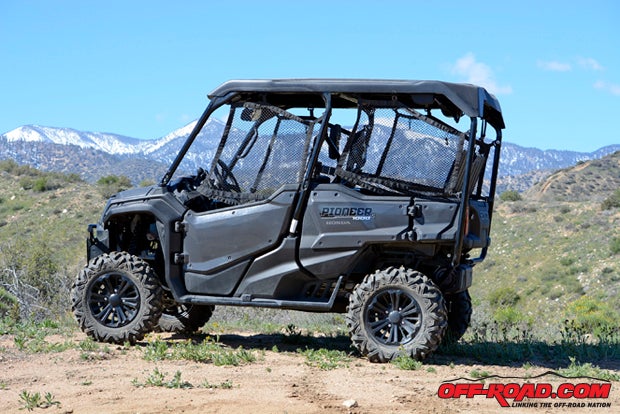
Toward the end of last year, Honda invited us out to Montana to get behind the wheel of its new flagship side-by-side, the Pioneer 1000. In our eyes, this new model clearly showed that Honda’s move into the side-by-side market back in 2009 was no flash in the pan. The Pioneer 1000 is Honda’s first top-flight UTV aimed at the most popular segment in the industry, the multipurpose category that consists of workers and fun-seekers alike.
Our time spent with Pioneer last year was great, and we left the trip with a great impression of the trail capability of the vehicle and the power that the 999cc, motorcycle-influenced powerplant provided. But we wanted to spend a little more time in the Pioneer closer to home and see how it held up to the demands of the desert landscape in our Southern California backyard.
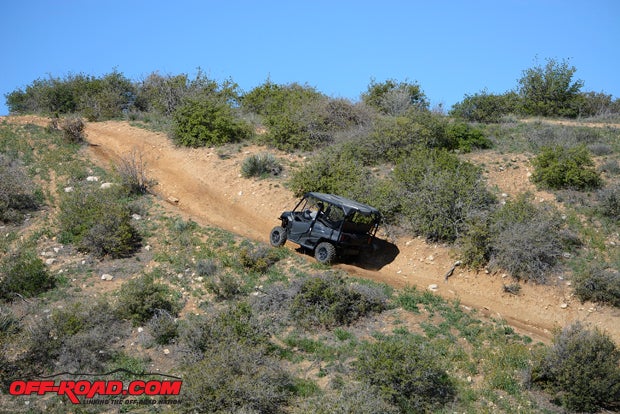
Pioneering the Way
For a few months, a Honda Pioneer 1000-5 model was in our off-road arsenal of vehicles. We used it for everything from weekend day trips, photo and video shoots, and it even served as our transport vehicle during the Ultra4 King of the Hammers, as we drove it form spot to spot while covering the race in Johnson Valley.
Honda offers two different models of its 1000. The standard model offers seating for three across the front bench seat, and there’s the 1000-5 model that offers seating for up to five thanks to two fold-up backseats. Given the choice, we’d opt for 1000-5 every time since the backseat is optional and the wheelbase and overall length of the 1000-5 isn’t longer (it’s actually ever so slightly shorter at 116.6 inches compared to the standard model’s 116.8” length).
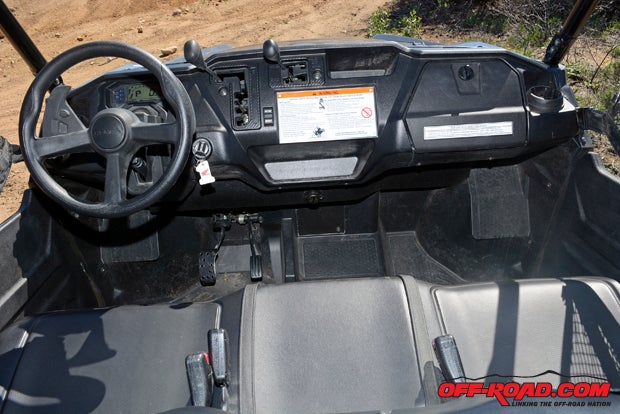
When extra seats aren’t needed, the backseats can fold down to offer more cargo space in the cargo bed. The 1000 and 1000-5 are both rated to carry 600 pounds of cargo if you live in California (or 1,000 pounds if you live outside of The Golden State), and our 1000-5 Deluxe does pack on an additional 168 pounds more than the 1000 EPS model. When all is said and done, the additional weight doesn’t take away from the versatility of the 1000-5 in our books or have any notable adverse affect on handling and performance.
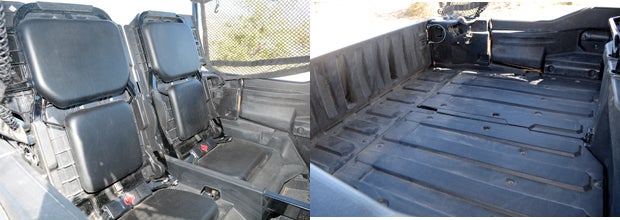
What separates the Pioneer 1000 from the company’s previous offerings is its powerful 999cc liquid-cooled parallel-twin four-stroke engine. The engine features a unicam design inspired by Honda’s motocross dirt bikes, and while some will care about knowing its 72-horsepower rating, all we care about is whether it offers usable power on the trail – and we’re happy to report it does. Whether climbing steep slopes or blasting through sandy turns, the Pioneer 1000’s engine provides great off-the-bottom acceleration and plenty of torque to put that power to the ground. The engine performance is impressive throughout the powerband, and most enthusiasts will find there’s ample power on the bottom end, midrange and top end. Whether on the trail or the open desert, the Sport mode is great for aggressive driving since it allows the engine to spin at a higher RPM. The ride is nice as well, as Honda’s effort to reduce engine shake transmitted to the driver and passengers thanks to rubber engine mounts is noted.
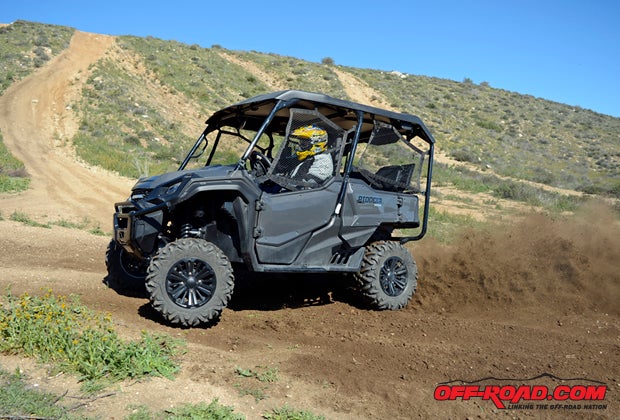
The dual-clutch transmission of the Pioneer 1000 helps the 999cc engine deliver the power in a refined manner. The six-speed trans is actually the first dual offered in a production side-by-side. The easiest way to describe the dual-clutch system is to envision two separate clutches, with one controlling the odd-numbered gears and the other the even. The transmission can respond extremely quickly since there’s more than one clutch at work – as one gear engages the other disengages. The advance shift logic feature of the dual-clutch trans also aids in performance by monitoring settings such as throttle position and input, engine RPM and vehicle speed to adjust accordingly to the current style of the driver.
What this all equates to on the trail is a smooth and powerful engine-transmission combination. Probably the feature we love most about the dual-clutch trans is the paddle shifters found just behind the steering wheel, allowing the driver to control the shift point to rev the engine higher if needed for certain situations. For instance, we found ourselves holding a lower gear longer a hard sweeping turn to allow the engine to rev higher through the corner and then upshifting while exiting the turn to maximize the speed. The great thing about the paddle shifters is the option is there to use them, but at any point the driver can let the Pioneer’s automatic transmission take over the shifting duty.
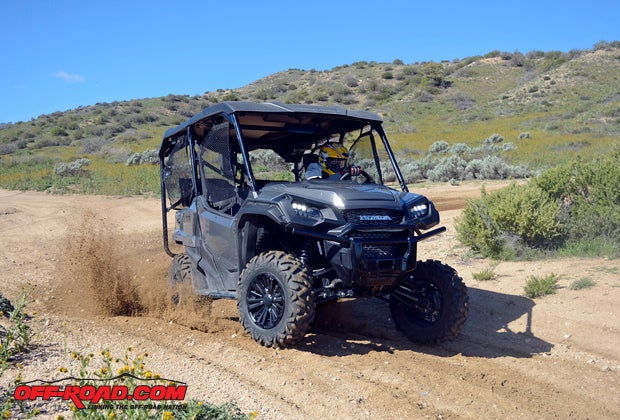
Trail and Desert Worthy?
We like the overall layout of the Pioneer’s interior for both front seat and backseat riders. Our only ergonomic complaint when we first drove the Pioneer 1000 still stands, and it is in regards to the dead pedal for the driver being a little too wide for our liking. That said, the overall layout of the front bench seat offers enough space for three adults, and there’s even grab straps built into the seat for the middle rider.
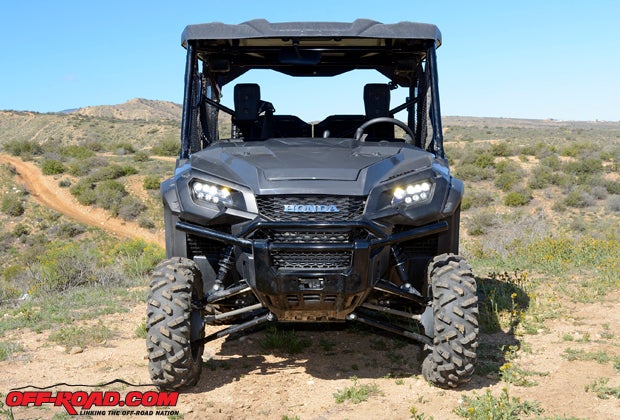
With more than 12 inches of ground clearance (12.4 on the 1000-5, to be exact) and skid plate protection for the undercarriage, the Pioneer offers plenty of clearance and we rarely bottomed out. The large 27-inch Maxxis Big Horn 2.0 tires help in the ground clearance department as well, but most importantly great all-around traction on the wide variety of terrain we encountered. The main difference on our Deluxe 1000-5 model is our unit has the upgraded 14-inch wheels compared to the 12-inch units on the standard model.
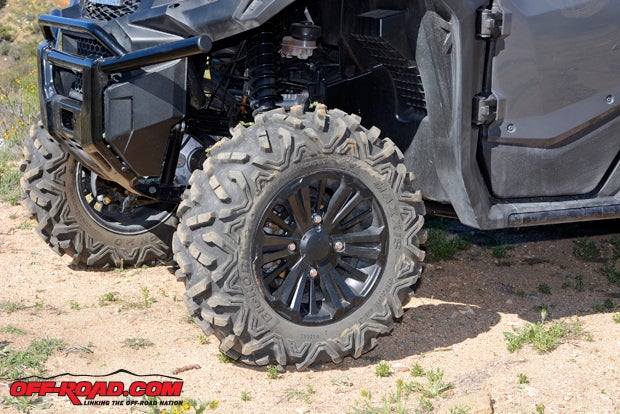
The purpose-built chassis of the Pioneer showed no weak spots during our testing. Regardless of the terrain we felt the chassis rigidity was excellent – even when charging through the large whoops in Johnson Valley. Since we were able to really put the Pioneer to the test in our wooded terrain last year, climbing over logs, muddy hill climbs and more, we spent far more time during this test in our typical Western desert terrain. For the most part, we were impressed with our 1000-5’s ability to keep a good pace in desert. The stock suspension performs adequately in a wide variety of situations, such as sandy washes, loose-packed dirt hill climbs or rocky slopes.
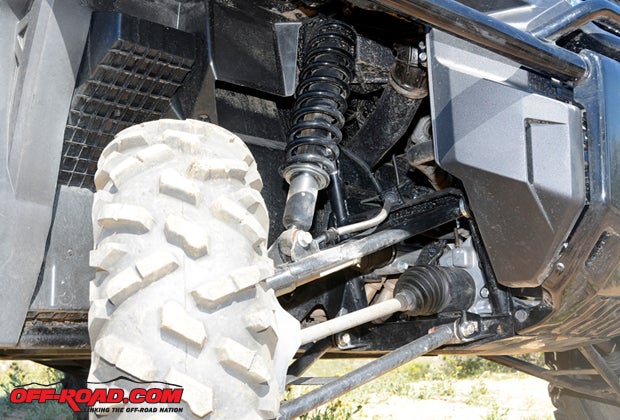
During our adventures in Johnson Valley during the King of the Hammers, we were impressed that the Pioneer could tackle the deep whoops of Johnson Valley – but this did expose the weak spot for the side-by-side in this type of riding. The dual A-Arm independent front suspension of our test rig offers 10.5 inches of travel, and although this is plenty for average trails, when the Pioneer encounters deep, high-speed whoops, the stock suspension limits how quickly the vehicle can drive through the whoops. The stock shocks do a decent job of soaking up the bumps overall, but we quickly learned to really run the vehicle hard in the desert an upgrade to the front suspension is necessary.
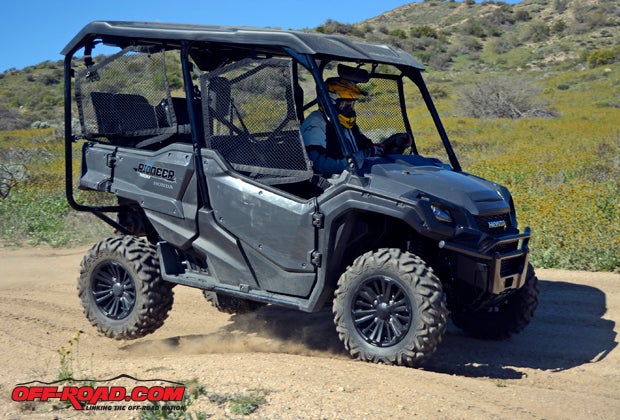
But this isn’t a big shocker, to be honest. Most multipurpose side-by-sides are designed for both play and work, and compromises are made to cater to both activities. So for more performance-minded driving, we’d look to the aftermarket to upgrade to a beefier coilover shock and likely a different A-arm setup to allow for more travel to really soak up the really harsh stuff. The Pioneer is still impressively predictable in the desert, but in large whoop sections we’d have to back off the throttle to avoid bottoming out, and this essentially marks the line for performance driving.
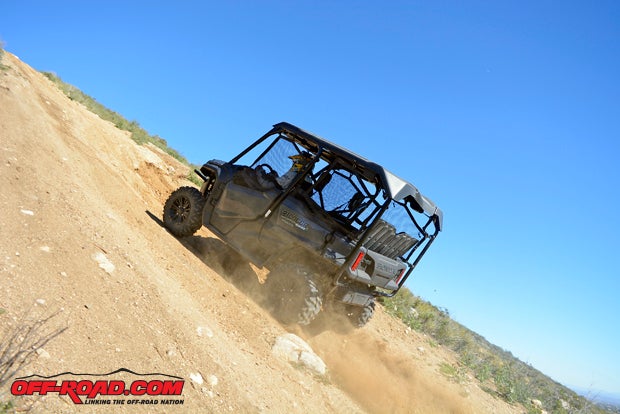
Lasting Impression
After our first trail rides last year with the Pioneer 1000 to our recent adventures with our 1000-5 loaner unit, we still haven’t changed our initial impression: The Pioneer 1000 is a great all-around side-by-side. The base model starts out at $13,999, while the Pioneer-5 Deluxe starts at $17,199. Regardless of which Pioneer model fits your fancy, for our money, we’d definitely opt for one of the models with electronic power steering (EPS) – and keep in mind the 1000-5 models all come equipped with it.
What we took away from our extended time with the Pioneer is that it could hold up to our abuse. Honda built a winning machine that has great mass appeal for a wide variety of riders. The Pioneer 1000 can tackle a wide variety of terrain with confidence in stock form, and with a few tweaks it would be well suited for more aggressive performance.


 Your Privacy Choices
Your Privacy Choices